Gav.
Challenge Owner
- Messages
- 7,760
- Name
- Gav
- Edit My Images
- Yes
Thanks Mike, I keep trying to recover the details and light, I use exp' comp, I try to match I what I see out while taking the shots, which is probably where I keep going wrong. I'll keep at itHi Gav,
Nice eye contact here - and never apologise for posting Red Kites!
A little underexposed - maybe try adding some exposure compensation or upping the exposure itself depending upon which mode you use.
You can recover a little more detail in post though
View attachment 346126
Mike
I try to match I what I see out while taking the shots
Thanks PhilThis isn't a dig at you Gav, butI've read this a few times recently on here, is it the latest fab?
Its a cracking shot, Red Kites are great birds but agree with Mike, its definitely under-exposed
Why wouldn't anyone want to expose for the detail in the subject instead of a dark shadowy shape?
You've only to look at the sky colour in Mikes edit compared to yours, it could even have some 'hot spots' but at least the bird is correctly exposed showing some good detail and colours.
The other thing to remember as well Gav, lifting shadows creates more noise in post which can have a knock on effect when cropping.


Thanks Phil
I'm fairly new to the bird photography and I think I'm afraid blowing highlights in the sky detail (or lack of at the minute) and this is probably partly to blame, I also suffer OCD and Anxiety (both really hit self confidence), they play havok on my mind and I can take ages to do something as my mind is fighting which 'route' to take, sorry to mention it, it's not an excuse I'm just trying to help myself and sometimes it helps to write it and read it backI've lifted the exp' in camera, I think you pointed it out to me along with a few others, I need to get to grips with it and push it harder.
Thanks for the feed back, I will try harder to get it right
May be I should stick to the macro work
Sorry for the waffle
Gav
Thanks Mike, I keep trying to recover the details and light, I use exp' comp, I try to match I what I see out while taking the shots, which is probably where I keep going wrong. I'll keep at it
Thank you for taking the time for the edit and reply
Thanks Kirk, I'll give it a readYou're doing fine, Gav, it takes time to get good and everyone does it in their own way at their own pace. I think it's a fine shot and but if I may suggest, (it's real easy) set your camera to EV +1 if their underside isn't very dark when shooting BIF and see how that goes. Sometimes the shadows on the underside are darker and require maybe an EV +2 or more for a little more exposure on that dark underside. I've included a link that I think you'll find helpful with shooting bif. it may say B & W photography but it works for colour, too. Take your time with it and have a great day.
Understanding exposure and gray scales in Black and White Photography
An article that shows you how exposure effects tones and how to move tones in the Zone gray scalewww.martinhensonphotography.co.uk
Hi Phil, no worries, I do nothing online and I joined up to TP as I wanted to learnGav, if I came across a bit harsh it certainly wasn't my intention, as I said, its a great, sharp shot, the birds got an excellent head position, its just a little under-exposed.
My suggestion is this.......indoors, place a vase of flowers ( or ornament, ect) on a window sill. On a bright sunny day, take photos of the flowers, adding + exposure comp untill you have the correct exposure for the flowers, no doubt there'll be some over exposure to the background from the bright light outside but don't worry about that, the bg isn't the subject.
If blowing some highlights to the bg is what it takes to get a correctly exposed subject, so be it.
How do I know this works? Because when I first started like you, its what I did. The subjects not going anywhere, you can take as long as you want just experimenting with settings. What you will find is, as you over-expose the shot too much, chromatic aberration comes into play, something else we see far too often in the forums.
Its also a good way to learn how metering works, not sure of the terminology on Canon but Nikon is matrix, centre weighted and spot. There's no right or wrong way to meter in my eyes as long as you understand what each setting does. I always shoot matrix (evaluating the whole image), its just what I like and what I've become use to.
To me, 1 thread like this is worth 10 great shot threads, its good to discuss techniques and critique. I know I sometimes sound like a broken record but I've learnt so much from here, taking onboard the crit and advice I've been offered, it would be such a shame if that disappears from the forums completely, just to be replaced with the 'great shot mate' brigade.
Thank you Mike, I will try to remember, thanks for the input, I apperciate itJust remember Gav, when you look up at a bird against a bright sky, your eyes will adjust to the sky making you think the bird is dark, when in reality its the same colour as it normally is!
Just get used to giving your subject as much exposure as you can - and here's the important bit - without blowing out any significant highlights. You'll then have a far far better file to work from with as much detail as is possible
Mike
There is a trend in wildlife photography of shooting more for mood/atmosphere/experience and much less about details/documentation... and I think that is a very good thing. But IMO, for that to work well you have to have mood/atmosphere (lighting/scenery/etc) to include/convey.This isn't a dig at you Gav, butI've read this a few times recently on here, is it the latest fab?
Its a cracking shot, Red Kites are great birds but agree with Mike, its definitely under-exposed
Why wouldn't anyone want to expose for the detail in the subject instead of a dark shadowy shape?
There is a trend in wildlife photography of shooting more for mood/atmosphere/experience and much less about details/documentation... and I think that is a very good thing.
Personally, with shots like this I let them underexpose (reducing ISO) and just recover the bird selectively/some in post
I think a lot of times it doesn't work... maybe more often than not. Wildlife, sports, journalism don't really lend themselves to "artistic" approaches easily; but when it does work it can be really special IMO.And I appreciate there'll be quite a few that agree with you Steve, the trouble for me is, whenever I see a shot like that, I always think of 'The Emperors new clothes'
That's what ISO invariance means... you don't create more noise by correcting ISO underexposure. You create the same noise, but you simultaneously prevent highlights from blowing out. Obviously this only works particularly well for raw files (OK for jpegs in Flat profile). But the single digit Nikons are not at all ISO invariant until much higher in the ISO range (2546+ for the D5/6).I shoot Nikon too but for me, I'd rather have to deal with noise from a higher ISO, correctly exposed image than create more noise in post correcting it.
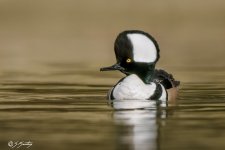
That's what ISO invariance means... you don't create more noise by correcting ISO underexposure. You create the same noise, but you simultaneously prevent highlights from blowing out. Obviously this only works particularly well for raw files (OK for jpegs in Flat profile). But the single digit Nikons are not at all ISO invariant until much higher in the ISO range (2546+ for the D5/6).
I took this image ~6 stops underexposed in respect to the BG/darks, in order to save details in the crest; but it was done at base ISO... D810, basic LR edits.
 Razorbill fly by by Phil D, on Flickr
Razorbill fly by by Phil D, on FlickrWhatever exposure adjustment you are making in order to save the whites/highlights is underexposure/ETTL in respect to the rest of the scene and a "normal exposure." And whatever edits that are required to lift the blacks/shadows back up is underexposure recovery; which would typically increase noise significantly in those areas. E.g. +1 stop exposure +100 shadows + 25 black in LR is about 2.5-3 stops of recovery in the dark regions; more than enough to be problematic in many instances.TBH, you've lost me, I'm not even quite sure what point you're trying to prove but if it works for you that's all that matters
I've taken 1000's of photos of black and white birds in bright sunlight, getting the correct exposure isn't rocket science. I have no bother retaining detail in blacks and whites and not one of them were taken @ -6 stops under-exposed then recovered in post.
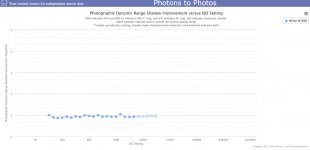
Hi @Gav-canon ,Thanks Mike, I keep trying to recover the details and light, I use exp' comp, I try to match I what I see out while taking the shots, which is probably where I keep going wrong. I'll keep at it
Thank you for taking the time for the edit and reply
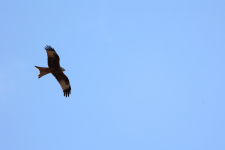
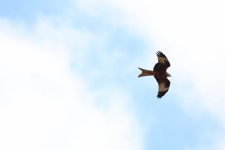
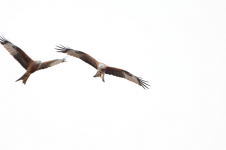
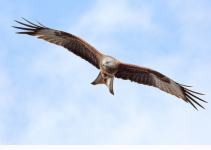


 .... I will try to get it right in camera next time
.... I will try to get it right in camera next time Red Kite - sky swap by Gavin Wickham, on Flickr
Red Kite - sky swap by Gavin Wickham, on FlickrJust to try the sky swap (never done one before) I had a quick play and tried to polish a ****.... I will try to get it right in camera next time
Red Kite - sky swap by Gavin Wickham, on Flickr

That's not a bad edit Gav, if you'd done that in the original post and said nowt, no one would have been any wiser
Actually, what most call ETTR is really ETTL/underexposure and making use of ISO invariance (if done by reducing ISO). If you are protecting highlights it is ETTL, if you are overexposing to get more out of shadows it is ETTR. Left/Right depends on the direction of the histogram shift compared to a "normal" subject exposure. IDK when/how that got so confused... the brightest highlights you want to retain being to the right edge of the histogram means nothing in itself...@sk66
Everydays a schoolday here and I'm always keen to learn new techniques but all that sounds complicated and too much trouble for little or no gain,.
I'll just stick to ETTR, it seems to work just fine for me, cheers
Actually, what most call ETTR is really ETTL/underexposure and making use of ISO invariance (if done by reducing ISO). If you are protecting highlights it is ETTL, if you are overexposing to get more out of shadows it is ETTR. Left/Right depends on the direction of the histogram shift compared to a "normal" subject exposure. IDK when/how that got so confused... the brightest highlights you want to retain being to the right edge of the histogram means nothing in itself...
I'm surprised you don't appreciate the freedom ISO invariance provides... it means you can underexpose w/o penalty (by reducing ISO) and there is almost never a reason to ever clip highlights.
Gav I’m starting to wonder if it’s your initial technique that’s wrong ,as I don’t know your camera or lens here’s a bit of advice that’s a good generic starter .. set your camera to shoot in AV mode . Set lens to its sharpest aperture ,usually around F8 depending on make/brand ,use manual iso at around 800 iso .to ensure a reasonable high shutter speed , And the most important bit have one of your control wheels set to easy exp compensation . When shooting birds at low levels leave as is but when shooting b.i.f or above you apply positive exp comp anywhere from two thirds of a stop to a couple of full stops ,this is really a case of trial and error depending on gear .but that’s the way to stop the birds under exposing .hope this helps@DizMatt Thank you for sharing the images, that has helped understand a bit more about what can be done, thank you for taking the time to share info and reply
Just to try the sky swap (never done one before) I had a quick play and tried to polish a ****.... I will try to get it right in camera next time
Red Kite - sky swap by Gavin Wickham, on Flickr
Thanks Mike, I'm going to find sometime this weekend to sit outside and get my head round thisGood to see the RP Gav, always best to get it right in camera, but I'm glad you've taken something on board and produced a much better result
Mike
Thank you, my technique is to blame, I'm doing too much at once and making a mess of it, I'm going to sit down at the weekend and get my head round the camera and settings, starting in the depths of winter with no light a watching the iso shoot to 12600 was worrying tooGav I’m starting to wonder if it’s your initial technique that’s wrong ,as I don’t know your camera or lens here’s a bit of advice that’s a good generic starter .. set your camera to shoot in AV mode . Set lens to its sharpest aperture ,usually around F8 depending on make/brand ,use manual iso at around 800 iso .to ensure a reasonable high shutter speed , And the most important bit have one of your control wheels set to easy exp compensation . When shooting birds at low levels leave as is but when shooting b.i.f or above you apply positive exp comp anywhere from two thirds of a stop to a couple of full stops ,this is really a case of trial and error depending on gear .but that’s the way to stop the birds under exposing .hope this helps
There's what the histogram should normally look like, and the shifted histogram result... which direction did you shift the histogram in order to protect highlights?How can it be ETTL if the histogram is right hand side heavy when the subject is black and white?
When set this way, dialing in +EC is going to drop the shutter speed for the BIF action shot; probably the opposite of what you would want in most cases.set your camera to shoot in AV mode . Set lens to its sharpest aperture ,usually around F8 depending on make/brand ,use manual iso at around 800 iso .to ensure a reasonable high shutter speed
I don't think you really did/are... the only apparent "issue" I see is the choices you made during editing. There's a half dozen ways of doing most things...Thank you, my technique is to blame, I'm doing too much at once and making a mess of it,
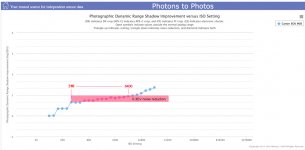
Without wishing to appear rude Steve ,that’s far to much waffle for a newbie that’s struggling to take in .. my methods I suggested to him have been tried and tested in the u.k and putting it bluntly work . Increasing exp comp when shooting into the sky will not lower shutter speeds enough to worry about as your letting in more light anyway . I have also used basically the same rig a sigma 150-600 plus 80D and my have a proven track record on b.i.f with it .There's what the histogram should normally look like, and the shifted histogram result... which direction did you shift the histogram in order to protect highlights?
Prior to cameras with high DR capability and some degree of ISO invariance, "ETTR" as you are describing it was not something anyone did. Protecting highlights causes too many issues with the rest of the image.
When set this way, dialing in +EC is going to drop the shutter speed for the BIF action shot; probably the opposite of what you would want in most cases.
I don't think you really did/are... the only apparent "issue" I see is the choices you made during editing. There's a half dozen ways of doing most things...
One of the main things is to use a metering mode that works best for you. For some that depends on the situation, e.g. partial for BIF and spot for waders. For others that means always using the same metering mode... either way, you have to know what the camera is looking at and how that will bias the exposure metering. I.e. what you need to do may be different if the bird is a barn owl vs if it's a jackdaw.
With your camera/lens...
What that ISO invariance means is:
- You can program the set button to enable/toggle EC on the back control wheel. Otherwise it is down in the menus/screens somewhere and not as useful.
- Between 500-600mm your lens is sharpest at f/8. But it's also 2/3 of a stop slower and not that much sharper. At shorter zoom positions it is as sharp, or sharper, at wider apertures.
- With high magnification, such as your 900mm effective, SS is much more important than most give credit for... in good light I would aim for 1/1200 minimum. Only going slower when I have to, when I can (tripod), or for creative effect (panning blur).
- The D90 is not ISO invariant, but it is a lot better than many earlier Canon models. It is very nearly ISO invariant between 318-6400, and IMO 6400 is getting to the point of "I really have to want the image" to use it. So I would just treat it as being ISO invariant at ISO 318 (actually 400 because I use 1/2 stops).
That's all because ISO is not exposure with a digital camera, it is not sensor sensitivity. It is simply signal amplification like the brightness control for your monitor. What most do not understand is that increasing ISO reduces noise in the final result for a camera that is non-invariant. But it makes little/no difference for a camera that is invariant (w/in the invariant range).
- You are still better off using ISOs 100-318 if there is enough light for it.
- At ISO 318 and above every image using the same Ap/SS will be essentially the same.
- The main thing using a ISO higher than 318 can do is reduce the recorded dynamic range and increase the probability of clipping highlights.
- But using an ISO that is excessively low isn't beneficial either (e.g. it makes image review difficult).
- The end result in terms of noise in dark regions will be essentially same as if you had used the equivalent ISO; because you collected the same amount of light.
And the result of those settings would be about the same as what you got for the Red Kite. The only difference using a higher ISO would make is that the sky would blow out instead of being blue; probably unrecoverable. And you wouldn't have to selectively edit the image in order to retain the sky while bringing up the Kite.
- Probably the easiest way to use your camera is set to manual mode w/ auto ISO.
- In manual mode the main dial adjusts the aperture; in good light set it to f/8 for long FL positions; otherwise just let the zoom position control the aperture (set it to 5.6 at 150mm).
- Set the SS as suitable for the subject/situation.
- Make certain that auto ISO is not clipping highlights and reducing the recorded dynamic range. That is probably easiest done in most situations by using the partial metering mode and negative EC as necessary. An arbitrary -1 will not hurt anything (unless it drives the ISO below 318).
This is the way I have been using Nikons for the last decade; biasing exposures towards underexposure by reducing ISO. Current Nikons even have a metering mode that does it automatically; and that's the metering mode I use the most often (highlight weighted). But if your goal is SOOC images w/ no editing; then you would generally be better off using the higher ISO (and recording jpegs).
This is your D90. The difference between ISO 318 and ISO 6400 is only 0.3EV; and that's exactly the same as the noise increase you will see by raising the exposure by 0.3 stops in post, which is virtually indistinguishable. It's even less (~ 0.1EV) between ISO 318-1600, which is where you really want to be w/ the D90; and I can pretty much promise that no-one will be able to see that difference... that's what being ISO invariant means.
View attachment 346397
With an ISO invariant camera there is never a need to reduce recorded DR or clip highlights, or even risk the chance of it (well, other than jpegs pitch side to press). Not taking advantage of that is just silly IMO. And you don't need to take my word for it... it is easy to test for yourself.
You are right. I was thinking that the only thing the camera can change is the SS when set that way; so 2 stops of +EC is 2 stops less SS. What I missed was that the +EC is to prevent the Av mode from increasing the SS due to the brighter BG (sky).Increasing exp comp when shooting into the sky will not lower shutter speeds enough to worry about as your letting in more light anyway
 )
)